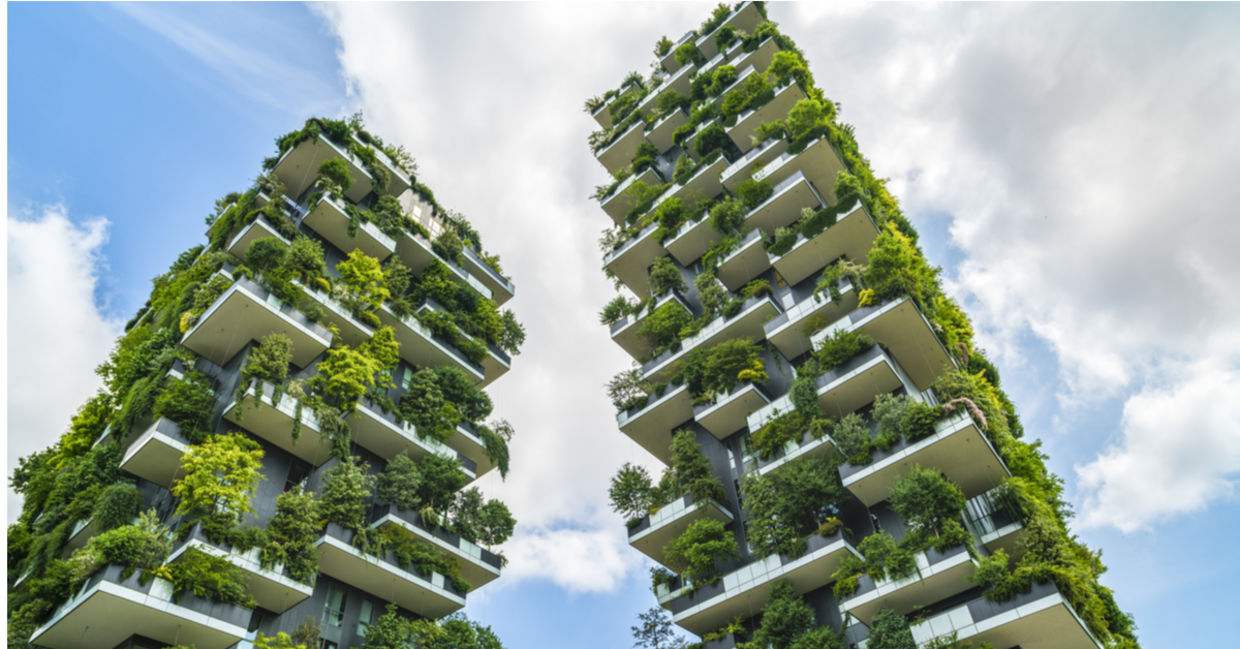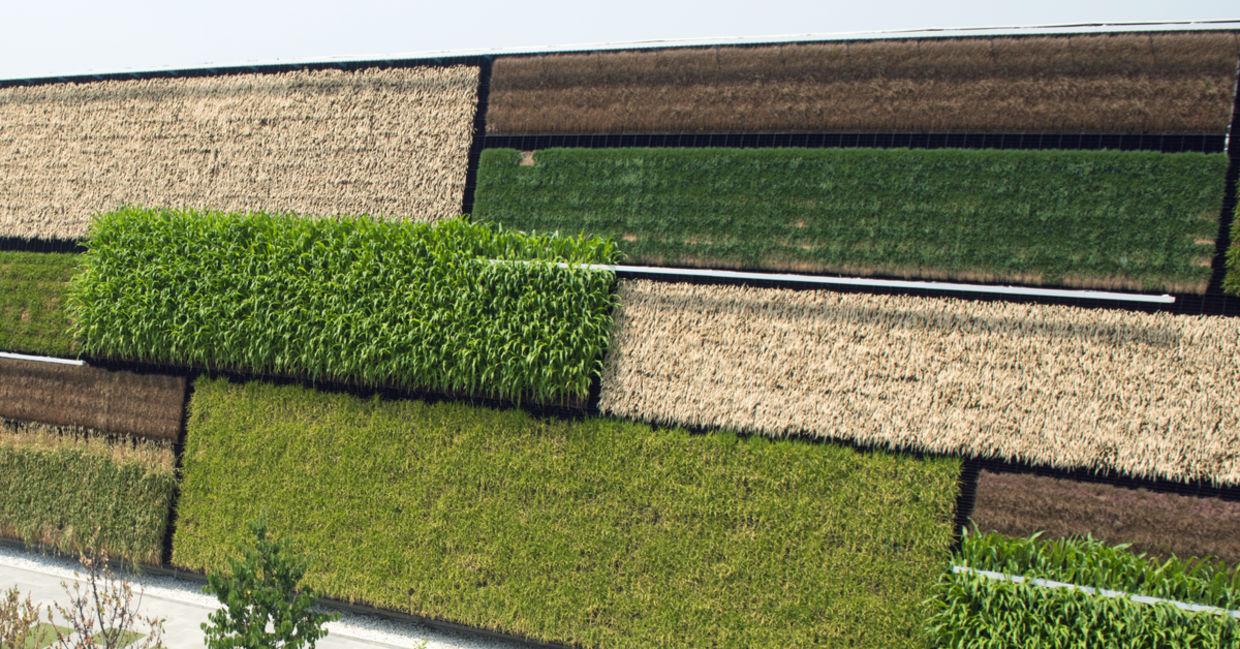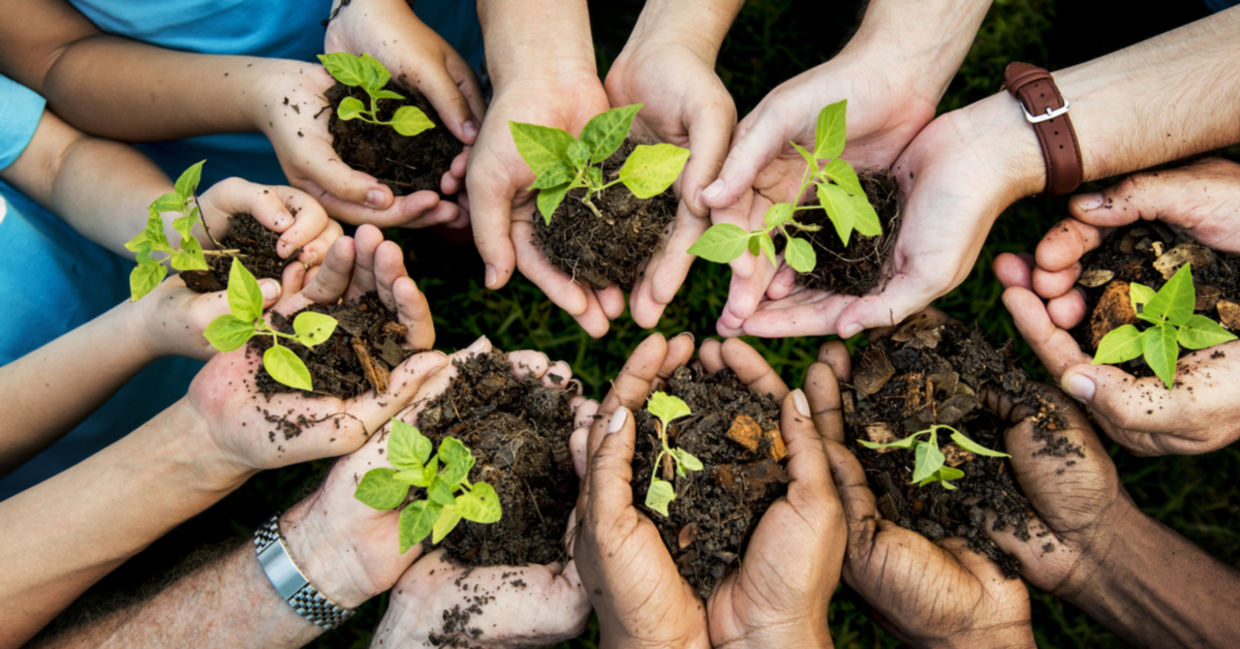
(Cristian Zamfir / Shutterstock.com)
Cities are thriving centers of diversity, art, culture, and employment. To make cities even better places to live, public spaces are now being redesigned to increase wellbeing. Many cities are starting to offer more greenery and walkability and these shared spaces foster community, serenity, and sustainability.
Green walls are structures that grow plants vertically. Also known as vertical gardens or living walls, they are an increasingly popular way of bringing nature into the city. Here are five reasons why green walls are becoming an important addition to the urban landscape.
Natural air cleaners
Air pollution is a common problem in densely packed cities. Smog can cause respiratory disease, according to National Geographic, in cities where single-passenger cars or coal plants are prominent. As Carbon dixoxide accumulates in the atmosphere, researchers look for new ways to absorb this heat-trapping gas. Since cities have less space to dedicate to trees, green walls fill this void. They make efficient use of small spaces by growing greens vertically and absorb Co2 emissions.
Green walls, such as Green City Solutions’ City Tree, are powerful, with a single unit having the environmental benefits of 275 trees. This means that one green wall could absorb approximately 250 grams of particulate matter a day, improving air quality. This can significantly reduce respiratory illnesses that are common among urban dwellers, such as asthma, lung cancer, and more.
The Citicape House in London contains the largest green wall in Europe. Dezeen reports that it is expected to capture eight British tons of carbon a year. While startups are looking for creative ways to absorb Co2, such as the BioSolar Leaf Project, natural solutions using vegetation are easy, affordable, and accessible for both small scale and large-scale replicas.
Enjoy freshly grown food
According to ATTRA, the National Sustainable Agriculture Information Services, fresh produce in the US travels 1,500 miles on average before reaching consumers. This affects the cost, freshness, nutrient-density, and environmental footprint of food. By growing food vertically, cities can increase access to fresh produce without giving up precious land space. Growing and farming produce locally is also an important tool for communities to gain resilience, food security, and social capital.

(Paolo Bona / Shutterstock.com)
They calm and inspire
Spending time in nature is one of the easiest and most inexpensive ways to increase happiness, decrease stress, and prevent illness. As many companies develop smart green walls that can live both indoors or outdoors, it is easier than ever to add nature and greenery to office spaces, public spaces, and hospitals. These walls provide a calming effect throughout the day. DIY options made of upcycled materials can also make building a green wall a fun bonding activity with coworkers and community groups.
Living green walls create an environment that is welcoming and makes people comfortable in the built environment. #bringnatureindoors #plantsmakepeoplehappy
— GPGB.Org (@GPGBdotORG) July 25, 2020
????: @Ambius pic.twitter.com/4ngRQuZ7fV
Just as nature is inspiring and beautiful, green walls provide a lush work of art in city spaces. Plants can be transformed into an extravagant or simple art display, depending on how one chooses to integrate the various colors, shapes, and patterns that plants offer. Whether for an office place, living room, or city square, a vertical garden adds an aesthetic touch, livening up any wall.
They provide heating and cooling
Creating sustainable heating and cooling is one of the biggest challenges on a warming planet. As buildings need to meet higher efficiency standards, green walls can provide a financially-savvy option for reducing use of energy. That’s because plants add a cooling benefit in the summertime and act as insulation in the wintertime. Research published in Building and Environment in 2017 showed that green walls could increase the efficiency of cooling by close to 60 percent. In fact, a number of impressive buildings around the world have already installed green walls as a method of minimizing greenhouse gas emissions.
Growing green walls educate youth
Green walls are a great way to engage and educate kids about the environment, healthy food and sustainability, whether at home or at school. There are infinite ways to upcycle old goods into planters, which teaches kids resourcefulness, recycling, and construction. Choosing plants, decorating planters, and working with soil allows them to play with creativity while learning the basics of gardening and horticulture in a fun and interactive way.
Ron Finley, a community organizer and urban gardener in Los Angeles famously teaches, “If kids grow kale, they eat kale. If they grow tomatoes, they eat tomatoes.” Finley believes that one of the best ways to encourage healthy eating is by engaging youth in gardening.

(Rawpixel.com / Shutterstock.com)







